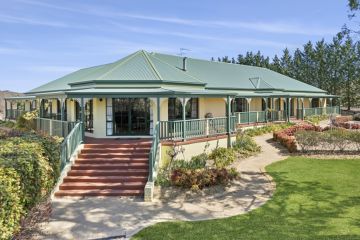Are you overcapitalising your property?

There are plenty of property investors who love to scout for property in order to make some cosmetic improvements and, without overcapitalising, some money.
We asked The Block judge Darren Palmer for his thoughts on making a makeover add up financially.
Renovating for sale
“What helps sell one house may be a hindrance to another,” Palmer says. “It’s all about looking at the current state and inclusions in your property, and then [comparing it with] the inclusions and amenities in the properties you find that are just like yours but have been improved.
“The last apartment I renovated was in Bondi – 100sqm, three bedrooms with one bathroom. The research I did uncovered that the highest prices for a 100sqm three-bedroom apartment in Bondi occurred when the property had two bathrooms. I reworked the floorplan to include an extra bathroom and I achieved the highest price I could for that size apartment in that area.
“When you’re renovating to sell, it is all about creating what the buyers’ market wants and responds to. You need to meet their expectations in terms of style, flow, floorplan, inclusions, materials and overall finish, and understand their desires, what they’re aspiring to, then slightly exceed it so there is a strong emotional connection with the home.”
Renovating investment property
However, your approach should be different if it’s an investment property you’re trying to breathe new life into.
“It’s important to consider wear and tear. Think about inclusions and materials that will be very durable or low cost if they will be replaced regularly.
“Sometimes playing it safe in a renovation for sale is not the best approach, as you want the right people to fall head over heels with the property. [However] it is wiser to play it safe with a rental property so you can appeal to the widest segment of the rental market.”
Family home makeover
According to Palmer, you can be more relaxed about your budget, time frame and the types of improvements you make when renovating the family home.
“If you end up spending a little more than you can make back immediately, in the long term you will most likely never recall the overspend. Nor will you notice it in contrast to the equity you’ll have built up if you’ve bought in a growing, high-demand area.”
One example is energy-efficiency improvements, where you can invest more now to reduce energy bills over the longer term, rather than you effectively subsidising the energy bills of whoever buys or lives in the property.
“The important thing to think about […] is ‘what does the house have to be to make me feel happy and prosperous?’ There’s no easy way to put a price on feeling good.”
Stick to your budget
Any type of renovation, though, should be carefully budgeted so as not to blow a hole in your finances, according to Palmer.
“Having a realistic budget to start with is best. Know what you have to spend and what you want to achieve, then create a spreadsheet of everything you have to do and buy, and price everything as tightly as possible.
“Once this is done, you can know if what you want to do is achievable for your budget or whether you need to compromise on things like tiles, taps or materials to achieve the result you want.”
Renovating is something of a national hobby in Australia, but it’s not something to be rushed into. Research everything first, budget all your costs (including holding costs such as selling fees, mortgage repayments and council levies on an empty property) and do your sums to ensure you don’t overcapitalise.
We recommend
We thought you might like
States
Capital Cities
Capital Cities - Rentals
Popular Areas
Allhomes
More








